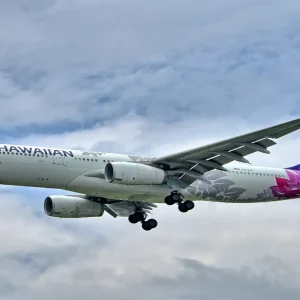
A year today (January 14, 2020) Microsoft’s Windows 7 support ends.
With the operating system (OS) still running on over 35 percent of the world’s desktops, according to a Net Applications survey earlier this month (we won’t mention the 4.54 percent of users still running XP), businesses face a substantial migration workload if they want to avoid a network of unsupported and insecure desktops.
(Doing so is a recipe for disaster: when your OS stops being supported, the updates and security patches stop, resulting in heightened risks of malware infection and the potential for devasting losses caused through ransomware attacks like the WannaCry outbreak. Third-party software will also “outgrow” your system”.

Sumir Karayi, the CEO of privately held 1E – a software and services company based in London that employees a team of 300 around the world – has supported plenty of blue chips with large migrations. The Microsoft veteran told Computer Business Review that with just 365 days to go, businesses need to get to work.
Why the Hurry?
Most large organisations still struggling to complete their migration. This isn’t because they’re lazy or unconcerned. It’s because it’s difficult, largely because of the hidden costs in running Windows.
A lot of organisations, particularly at the outset of the process, simply don’t realise how expensive it is; not just to migrate, but to run a lot of distributed endpoints.
The working world has changed. Today, everyone wants to have a laptop and to use it at home, and a lot of systems in place weren’t designed for this. Windows was really designed in a world where people would come into the office, turn on their PC connected to the LAN, and leave it at the office overnight…
What’s the Biggest Sticking Point?
From the companies we’ve spoken to, there’s only a handful that have completed (entirely completed) their Windows 10 migrations. Now a number of organisations have done the easy 80 percent: the in-place upgrades, the machine replacements. That last 20 percent, however (as per Pareto’s Principle), constitute the biggest part of the job.
 It was the same with Windows 7, which took many organisations several years to get over the line. Nowadays of course, not only are we much more dependent on applications, but there are many more remote workers and smaller offices. Both mean hidden costs. For small offices, without added automation capabilities, you have to send a person down to every machine to do the migration. And there are there are plenty of home users that rarely or never come into the office. Even beyond the migration itself –how can you provision new or replacement machines?
It was the same with Windows 7, which took many organisations several years to get over the line. Nowadays of course, not only are we much more dependent on applications, but there are many more remote workers and smaller offices. Both mean hidden costs. For small offices, without added automation capabilities, you have to send a person down to every machine to do the migration. And there are there are plenty of home users that rarely or never come into the office. Even beyond the migration itself –how can you provision new or replacement machines?
What’s the Answer?
Due to the Windows 10 servicing model, with its biannual updates, without automation the delays and challenges outlined above will outlive the migration itself! Not only this, but there are still break/fix builds to account for, and machines to replace… that’s around half your computers per year.
Automation’s the only answer. If you have to spend 1-2 hours on a machine replace or break/fix rebuild, or a wipe and load migration, that’s a prohibitively large cost. And that’s just the IT expense. These processes easily consume half a day or even a day of productivity. If that’s a 10,000 seat company – it adds up to a much greater amount.
Any Tips?
It’s essential that there are some data setting recovery options, because there are lots of scenarios, not to mention disaster recovery (DR) scenarios, where machines may be lost. Companies like ours focus on rebuilding machines from scratch – fresh OS, identical or updated applications – and finally restoring the data itself.
The best way to do that is through peer to peer technology. If that’s not possible there has to be a fallback to offline storage, such as USB, or internet-based storage such as OneDrive. There are solutions such as ours that can automate this process even for remote workers. But we definitely don’t advocate the image-based back up for the machine, because the image is out of date from the moment you get them.
Read this: 5 Things to do Before Ransomware Strikes






